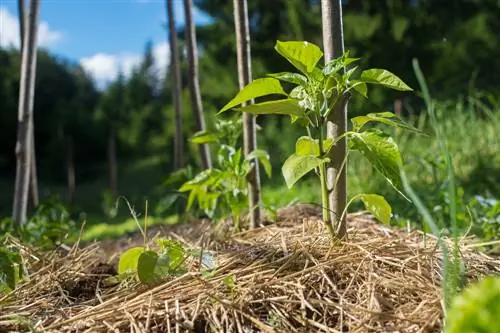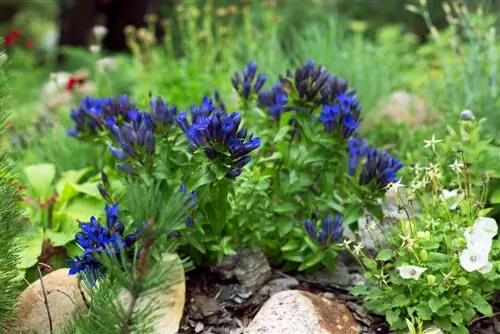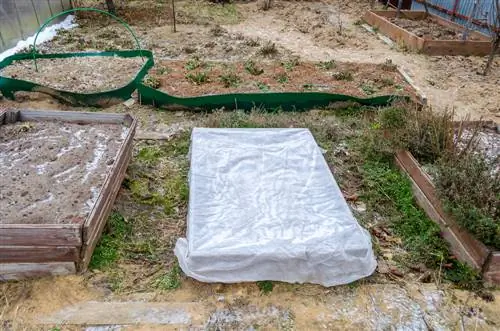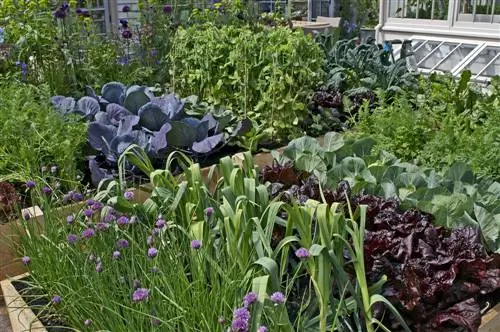- Author admin [email protected].
- Public 2023-12-16 16:46.
- Last modified 2025-01-23 11:21.
Mulching is the act of covering the soil with a layer of organic material. But does this also make sense in the vegetable patch and how should you go about it?
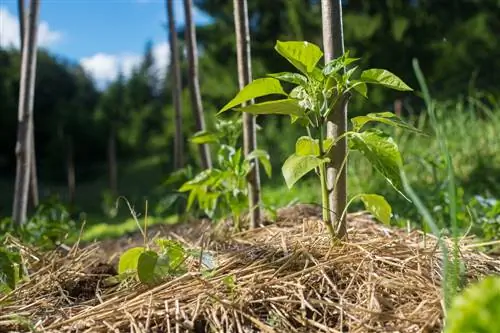
Why and how should you mulch a vegetable patch?
Mulching in the vegetable patch provides protection for the soil, improves soil quality and suppresses weeds. When mulching, you should loosen the soil, only use weed-free material and choose the right mulching material for the plants. Do not mulch too thickly and shred the material.
The benefits of mulching
Mulching offers a variety of benefits. You should therefore not forego this measure in the vegetable patch.
Protecting the soil:
- Weather influences such as wind and strong sunlight no longer dry out the soil as quickly.
- The sun can kill soil life in the top layers of the soil because the important microorganisms die in high heat.
- Soil erosion is effectively prevented.
- The mulch layer keeps strawberries, tomatoes, cucumbers, cabbage and other crops dry and clean. This protects against plant diseases.
Soil improvement
- Mulched soils have a stable soil temperature. This protects the active small creatures and microorganisms.
- As a result, the soil fermentation and thus the quality of the soil is improved. The substrate has a loose crumb structure.
- Due to the naturally formed humus, sandy soils gain water and nutrient holding power.
- Clay soils are loosened up.
- Mulching keeps the water and nutrient balance in the soil more stable.
In addition, weeds are suppressed by the mulch cover, so you have to pull fewer and fewer weeds. The work becomes easier because the plants can be easily pulled out of the loose soil.
How to mulch correctly?
When mulching, proceed as follows:
- Before mulching, loosen or dig up the soil surface well with a hoe.
- Only use material that is free of weed seeds and crop residues.
- Choose the right mulching material. For example, not all plants tolerate bark mulch (€279.00 on Amazon), which can acidify the soil.
- Do not mulch too thickly, otherwise rot may occur.
- The mulching material should be shredded.
- Leave the mulched areas untouched for a while so that the active processes are not destroyed.
- However, regrowing weeds should be pulled out regularly.
Tip
Snails like to hide in mulch. Therefore, collect the animals consistently. To do this, lay out large rhubarb leaves between the vegetable plants, under which the molluscs like to hide. You can also mix the mulching material with strongly scented herbs. This also keeps the uninvited guests away.

